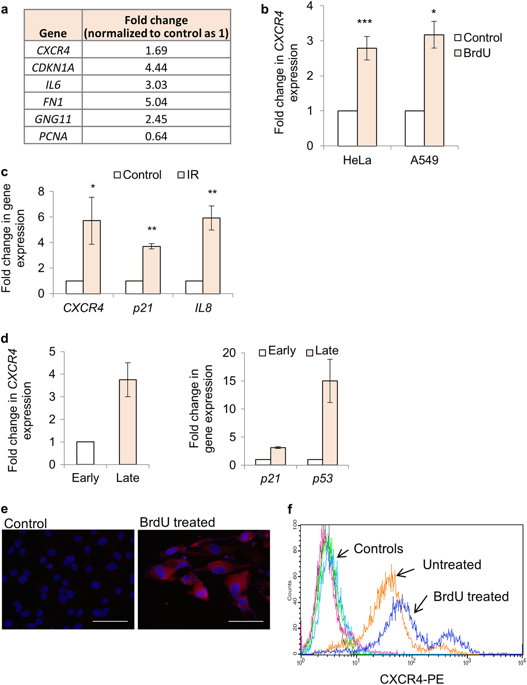npj Aging ( IF 4.1 ) Pub Date : 2018-08-30 , DOI: 10.1038/s41514-018-0028-0 Raji R. Nair , Shreyas V. Madiwale , Deepak Kumar Saini

|
One of the major pathological outcomes of DNA damage during aging or anticancer therapy is enhanced inflammation. However, the underlying signaling mechanism that drives this is not well understood. Here, we show that in response to DNA damage, ubiquitously expressed GPCR, CXCR4 is upregulated through the ATM kinase-HIF1α dependent DNA damage response (DDR) signaling, and enhances inflammatory response when activated by its ligand, chemokine CXCL12. A pharmacologically active compound screen revealed that this increased inflammation is dependent on reduction in cAMP levels achieved through activation of Gαi through CXCR4 receptor and PDE4A. Through in vivo analysis in mice where DNA damage was induced by irradiation, we validated that CXCR4 is induced systemically after DNA damage and inhibition of its activity or its induction blocked inflammation as well as tissue injury. We thus report a unique DNA damage-linked inflammatory cascade, which is mediated by expression level changes in a GPCR and can be targeted to counteract inflammation during anticancer therapies as well as aging.
中文翻译:

通过限制GPCR,CXCR4的上调和激活来抑制衰老和抗癌疗法中的炎症
衰老或抗癌治疗期间DNA损伤的主要病理结果之一是炎症增强。但是,驱动它的底层信令机制还没有被很好地理解。在这里,我们表明响应DNA损伤,普遍表达的GPCR,CXCR4通过ATM激酶-HIF1α依赖性DNA损伤应答(DDR)信号上调,并在被其配体趋化因子CXCL12激活时增强炎症反应。药理活性化合物筛选显示,这种炎症增加取决于通过CXCR4受体和PDE4A激活Gαi实现的cAMP水平降低。通过对小鼠进行辐照诱导DNA损伤的体内分析,我们验证了CXCR4是在DNA损伤后被系统性诱导的,抑制其活性或诱导其阻断了炎症以及组织损伤。因此,我们报告了一种独特的DNA损伤相关的炎症级联反应,该反应由GPCR中的表达水平变化介导,并且可以靶向抵消抗癌治疗以及衰老过程中的炎症。











































 京公网安备 11010802027423号
京公网安备 11010802027423号